When it comes to compact SUVs, the Hyundai Tucson and Nissan X-Trail represent two of the leading options on the market. Both vehicles are designed to meet the demands of modern drivers, offering advanced technology, safety features, and versatile performance. In this comparative review, we will explore the technical aspects, innovations, and driving experiences that these two contenders bring to the table.
Hyundai Tucson vs Nissan X-Trail – Differences & prices compared
Two cars, one duel: Hyundai Tucson meets Nissan X-Trail.
Which one wins in performance, efficiency and value for money? Find out now!
Performance and Engine Options
The Hyundai Tucson boasts a diverse range of engine choices, with configurations including Diesel MHEV, Petrol MHEV, Full Hybrid, and Plug-in Hybrid options. This lineup allows consumers to select a powertrain that best suits their driving style and efficiency needs. Power outputs vary from 136 HP to a robust 252 HP depending on the engine, providing a thrilling driving experience.
On the other hand, the Nissan X-Trail offers a more limited range of engines, primarily focusing on Petrol MHEV and Full Hybrid systems, with power outputs between 163 HP and 213 HP. While the X-Trail's performance is commendable, the Tucson’s variety may appeal more to those looking for customizability.
Transmission and Drive Types
Hyundai offers both automatic and manual transmissions for the Tucson, which includes a dual-clutch automatic system for swift gear changes. The Tucson also provides both Front-Wheel Drive (FWD) and All-Wheel Drive (AWD) options, giving drivers flexibility depending on their preference for handling and traction.
Nissan simplifies the experience with an automatic transmission featuring a continuously variable transmission (CVT) in the X-Trail. Like the Tucson, the X-Trail is available in both FWD and AWD configurations, catering to those who need enhanced stability in various driving conditions.
Fuel Efficiency
Fuel efficiency is a crucial factor for many SUV buyers. The Hyundai Tucson delivers impressive consumption figures ranging from approximately 5.1 L/100km to 6.7 L/100km, depending on the chosen engine. Its hybrid variants also emphasize eco-friendliness while providing a respectable electric range of up to 70 km for the plug-in hybrid model.
The Nissan X-Trail, while slightly less efficient overall, offers commendable consumption figures between 5.7 L/100km and 6.9 L/100km. Its hybrid options are designed for buyers looking to minimize their carbon footprint, but it falls slightly short of Tucson's potential for greener driving options.
Interior and Cargo Space
Interior space and comfort can greatly impact family outings or daily commutes. The Hyundai Tucson provides a spacious cabin with a trunk capacity varying from 546 L to 620 L, depending on the configuration. Its ergonomic design focuses on comfort and accessibility, making it a family-friendly option.
On the flip side, the Nissan X-Trail offers a slightly larger trunk capacity of up to 585 L, but it also has a 7-seat option for those who require additional seating. With a higher seating position and wide doors, the X-Trail manages to strike a balance between convenience and utility.
Safety Features and Innovations
In today's automotive landscape, safety is paramount. Both Hyundai and Nissan equip their SUVs with a suite of advanced safety technologies. The Tucson includes features such as Forward Collision-Avoidance Assist, Lane Keeping Assist, and Blind Spot Monitoring, pushing the boundaries of safety innovation.
The Nissan X-Trail similarly exhibits a strong focus on safety with its ProPILOT Assist, which combines adaptive cruise control with lane-keeping technologies. This feature provides a level of semi-autonomous driving that enhances comfort and safety during long journeys.
Conclusion: Which SUV Should You Choose?
Choosing between the Hyundai Tucson and Nissan X-Trail ultimately boils down to personal preferences and priorities. The Tucson excels in engine variety and superior fuel economy, while the X-Trail offers spaciousness and advanced semi-autonomous driving features. Buyers should consider what matters most to them—be it power, efficiency, comfort, or cutting-edge innovation—before making a decision.
Whichever option drivers choose, both SUVs prove to be great companions on the road, offering a blend of style, performance, and practicality that is hard to ignore.
Here’s where it gets real: The technical differences in detail
Costs and Efficiency:
When it comes to price and running costs, the biggest differences usually appear. This is often where you see which car fits your budget better in the long run.
Hyundai Tucson has a somewhat advantage in terms of price – it starts at 30600 £, while the Nissan X-Trail costs 34000 £. That’s a price difference of around 3394 £.
Fuel consumption also shows a difference: Hyundai Tucson manages with 1 L and is therefore significantly more efficient than the Nissan X-Trail with 5.70 L. The difference is about 4.70 L per 100 km.
Engine and Performance:
Under the bonnet, it becomes clear which model is tuned for sportiness and which one takes the lead when you hit the accelerator.
When it comes to engine power, the Hyundai Tucson has a a bit edge – offering 252 HP compared to 213 HP. That’s roughly 39 HP more horsepower.
In acceleration from 0 to 100 km/h, the Nissan X-Trail is to a small extent quicker – completing the sprint in 7 s, while the Hyundai Tucson takes 7.90 s. That’s about 0.90 s faster.
In terms of top speed, the Nissan X-Trail performs barely noticeable better – reaching 200 km/h, while the Hyundai Tucson tops out at 194 km/h. The difference is around 6 km/h.
There’s also a difference in torque: Nissan X-Trail pulls noticeable stronger with 525 Nm compared to 367 Nm. That’s about 158 Nm difference.
Space and Everyday Use:
Beyond pure performance, interior space and usability matter most in daily life. This is where you see which car is more practical and versatile.
Seats: Nissan X-Trail offers distinct more seating capacity – 7 vs 5.
In curb weight, Hyundai Tucson is barely noticeable lighter – 1520 kg compared to 1668 kg. The difference is around 148 kg.
In terms of boot space, the Hyundai Tucson offers slight more room – 620 L compared to 585 L. That’s a difference of about 35 L.
In maximum load capacity, the Hyundai Tucson performs noticeable better – up to 1799 L, which is about 375 L more than the Nissan X-Trail.
When it comes to payload, Nissan X-Trail hardly perceptible takes the win – 574 kg compared to 545 kg. That’s a difference of about 29 kg.
Who comes out on top?
Overall, the Hyundai Tucson shows itself to be outperforms in nearly all aspects and secures the title of DriveDuel Champion.
It convinces with the more balanced overall package and proves to be the more versatile choice for everyday use.
 @ Hyundai Motor Company
@ Hyundai Motor Company
Hyundai Tucson
Hyundai Tucson
Hyundai Tucson marries bold, sculpted looks with a clever, roomy cabin that feels smarter than its price tag suggests. It's composed on the road, easy to live with day-to-day, and a sensible choice for buyers who want SUV style without the showroom theatrics.
details @ Hyundai Motor Company
@ Hyundai Motor Company
 @ Hyundai Motor Company
@ Hyundai Motor Company
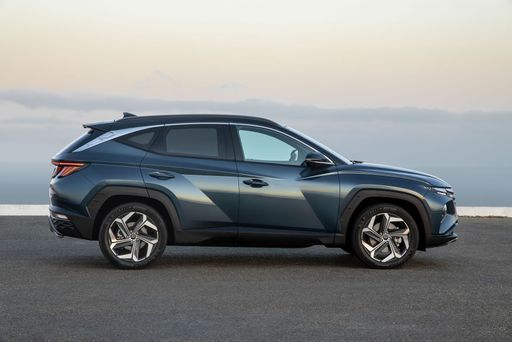 @ Hyundai Motor Company
@ Hyundai Motor Company
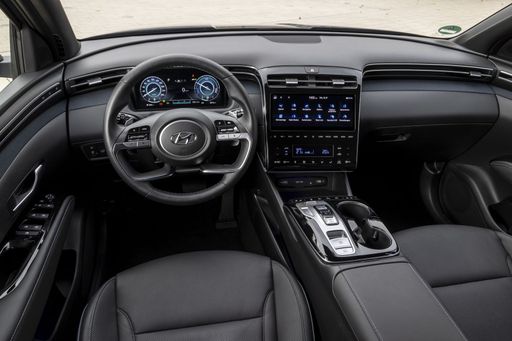 @ Hyundai Motor Company
@ Hyundai Motor Company
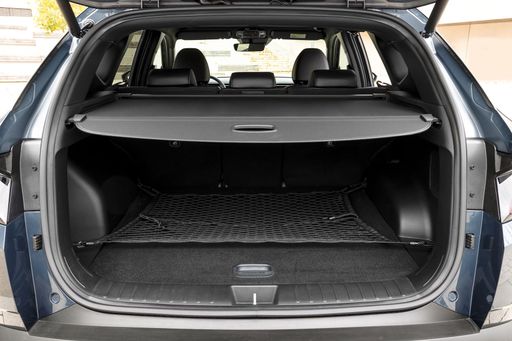 @ Hyundai Motor Company
@ Hyundai Motor Company
Nissan X-Trail
The Nissan X-Trail stands out with its spacious interior and practical design, making it an ideal choice for families and adventure enthusiasts alike. Its sleek exterior styling is complemented by modern technology features that enhance both driving pleasure and safety. This versatile SUV offers a comfortable ride, whether navigating city streets or exploring off-road paths, ensuring you travel in style and comfort.
details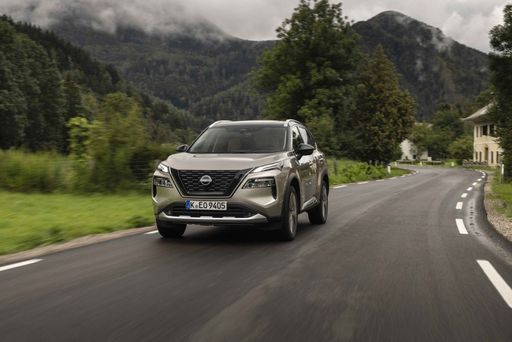 @ Nissan Motor Corporation
@ Nissan Motor Corporation
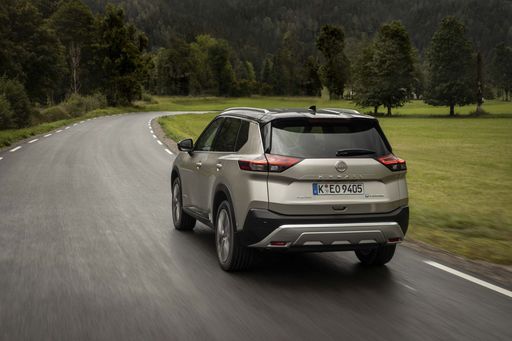 @ Nissan Motor Corporation
@ Nissan Motor Corporation
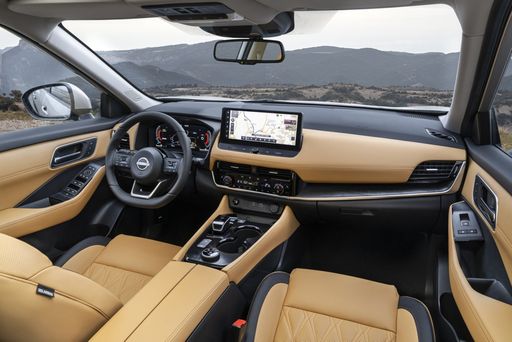 @ Nissan Motor Corporation
@ Nissan Motor Corporation
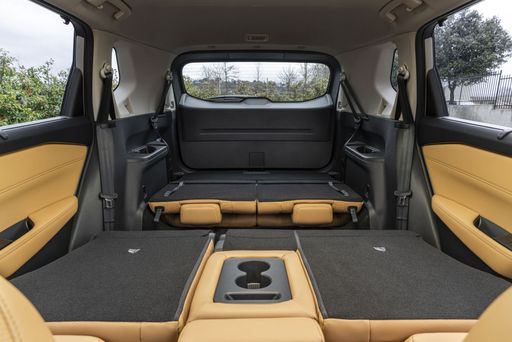 @ Nissan Motor Corporation
@ Nissan Motor Corporation
 @ Hyundai Motor Company
@ Hyundai Motor Company
|
 @ Nissan Motor Corporation
@ Nissan Motor Corporation
|
|
|
|
Costs and Consumption |
|
|---|---|
|
Price
30600 - 46300 £
|
Price
34000 - 50400 £
|
|
Consumption L/100km
1 - 6.9 L
|
Consumption L/100km
5.7 - 6.9 L
|
|
Consumption kWh/100km
-
|
Consumption kWh/100km
-
|
|
Electric Range
64 - 70 km
|
Electric Range
-
|
|
Battery Capacity
-
|
Battery Capacity
-
|
|
co2
22 - 156 g/km
|
co2
131 - 161 g/km
|
|
Fuel tank capacity
42 - 54 L
|
Fuel tank capacity
55 L
|
Dimensions and Body |
|
|---|---|
|
Body Type
SUV
|
Body Type
SUV
|
|
Seats
5
|
Seats
5 - 7
|
|
Doors
5
|
Doors
5
|
|
Curb weight
1520 - 1889 kg
|
Curb weight
1668 - 1961 kg
|
|
Trunk capacity
546 - 620 L
|
Trunk capacity
177 - 585 L
|
|
Length
4510 - 4520 mm
|
Length
4680 mm
|
|
Width
1865 mm
|
Width
1840 mm
|
|
Height
1650 mm
|
Height
1720 mm
|
|
Max trunk capacity
1721 - 1799 L
|
Max trunk capacity
1396 - 1424 L
|
|
Payload
525 - 545 kg
|
Payload
432 - 574 kg
|
Engine and Performance |
|
|---|---|
|
Engine Type
Diesel MHEV, Petrol MHEV, Petrol, Full Hybrid, Plugin Hybrid
|
Engine Type
Petrol MHEV, Full Hybrid
|
|
Transmission
Automatic, Manuel
|
Transmission
Automatic
|
|
Transmission Detail
Dual-Clutch Automatic, Manual Gearbox, Automatic Gearbox
|
Transmission Detail
CVT, Reduction Gearbox
|
|
Drive Type
Front-Wheel Drive, All-Wheel Drive
|
Drive Type
Front-Wheel Drive, All-Wheel Drive
|
|
Power HP
136 - 252 HP
|
Power HP
163 - 213 HP
|
|
Acceleration 0-100km/h
7.9 - 11.6 s
|
Acceleration 0-100km/h
7 - 9.6 s
|
|
Max Speed
180 - 194 km/h
|
Max Speed
170 - 200 km/h
|
|
Torque
265 - 367 Nm
|
Torque
300 - 525 Nm
|
|
Number of Cylinders
4
|
Number of Cylinders
3
|
|
Power kW
100 - 185 kW
|
Power kW
120 - 157 kW
|
|
Engine capacity
1598 cm3
|
Engine capacity
1497 cm3
|
General |
|
|---|---|
|
Model Year
2024
|
Model Year
2024
|
|
CO2 Efficiency Class
E, F, D, B
|
CO2 Efficiency Class
F, D, E
|
|
Brand
Hyundai
|
Brand
Nissan
|
What drive types are available for the Hyundai Tucson?
Available configurations include Front-Wheel Drive or All-Wheel Drive.
The prices and data displayed are estimates based on German list prices and may vary by country. This information is not legally binding.
